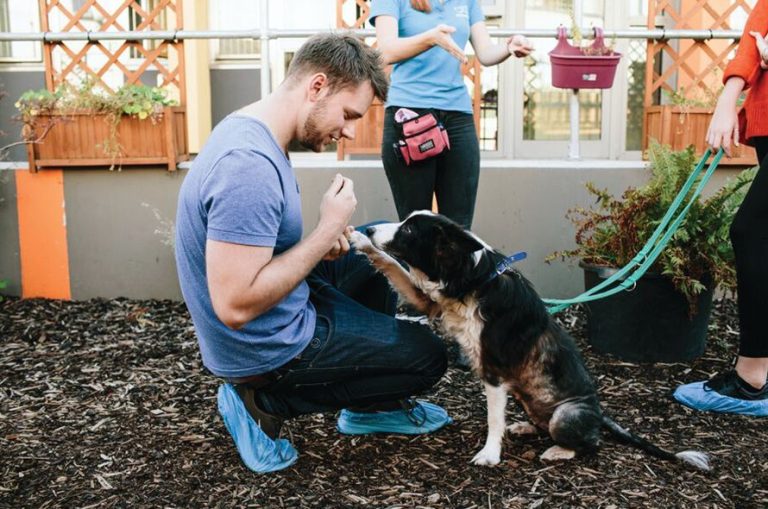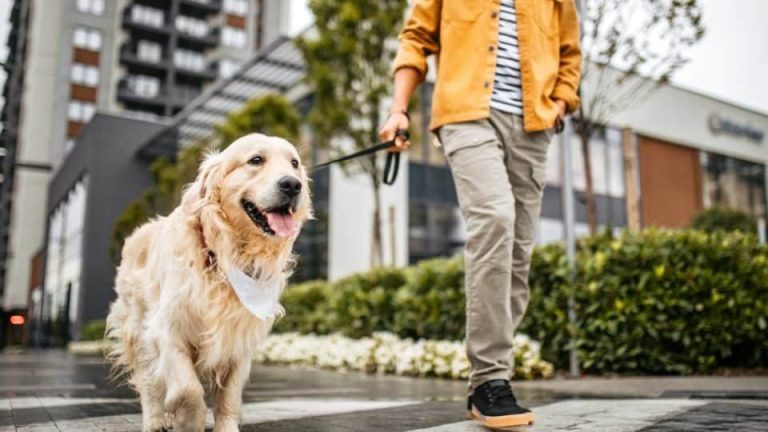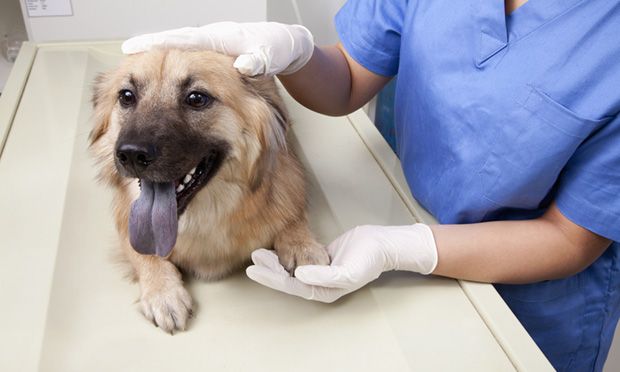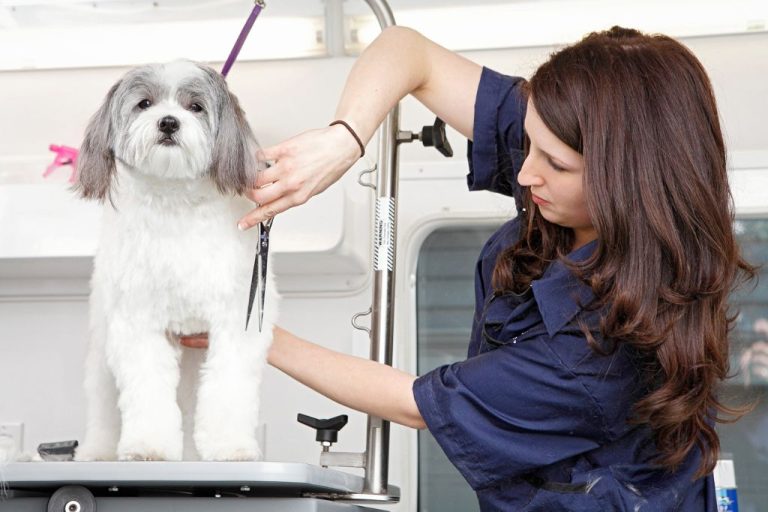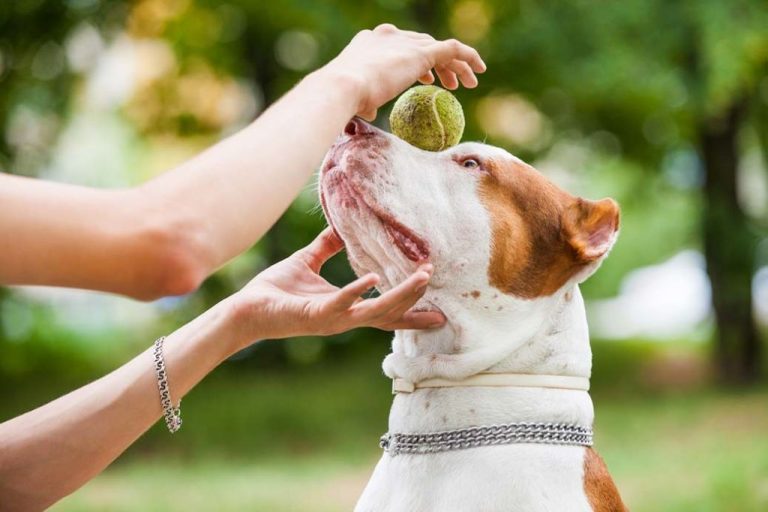Target Training: Using Objects To Shape Behavior
Target training is a form of animal training that uses conditioned reinforcers to shape behavior. It involves teaching an animal to touch or orient towards a specific target object on cue. This allows the trainer to guide the animal’s movements and direct their attention.
The origins of target training can be traced back to marine mammal training in the 1950s and 1960s. Trainers like Karen Pryor started using whistle blows or hand targets to cue dolphins and whales to present different parts of their bodies. This allowed intricate behaviors to be shaped through small approximations.
Target training was popularized in dog training by Gary Wilkes in the 1990s. He advocated for using hand targets and target sticks to lure dogs into position and mark correct responses. This allowed force-free shaping of complex behaviors. The technique spread rapidly in the positive reinforcement training community.
The process relies on classical and operant conditioning. Presenting the target serves as a conditioned reinforcer, marking correct responses and building an association. Appropriate targeting behavior is also directly reinforced with treats or other rewards. This gradually shapes reliable targeting on cue. Target training provides focus, direction, and clear criteria for learning.
The Science Behind Target Training
The scientific concepts behind target training are classical and operant conditioning. The basic idea is that certain behaviors can be taught and reinforced through the use of targeted rewards. This is grounded in psychological research on learning and behavior modification.
Classical conditioning, first studied by Ivan Pavlov, demonstrates how a neutral stimulus can become associated with an unconditioned stimulus to elicit a conditioned response [1]. For example, Pavlov conditioned dogs to salivate at the sound of a bell by pairing food (unconditioned stimulus) with the bell (neutral stimulus). Eventually, the dogs learned to associate the bell with food and would salivate when they heard the bell – even without food present.
Operant conditioning expands on classical conditioning by examining how behaviors can be shaped through consequences [2]. Behaviors followed by a reward are more likely to be repeated (positive reinforcement), while behaviors followed by punishment are less likely to recur (negative reinforcement). This discovery by B.F. Skinner allows animal trainers to reinforce desired behaviors through the strategic use of rewards and targets.
Target training combines classical and operant conditioning. By connecting a target object with a reward, the animal learns to touch or orient towards the target. This touch behavior is reinforced with a reward, making the response more likely in the future. As behaviors strengthen, targets and rewards are systematically faded.
When to Use Target Training
Target training is an excellent method for teaching dogs specific behaviors and commands. The target gives the dog a clear visual cue to focus on, making it easier for them to understand what behavior you want them to perform. Target training can be used to teach skills like spin, speak, go to mat, and more. It is also very effective for shaping more complex chains of behaviors. For example, you could train a dog to nose target several objects in a specific sequence.
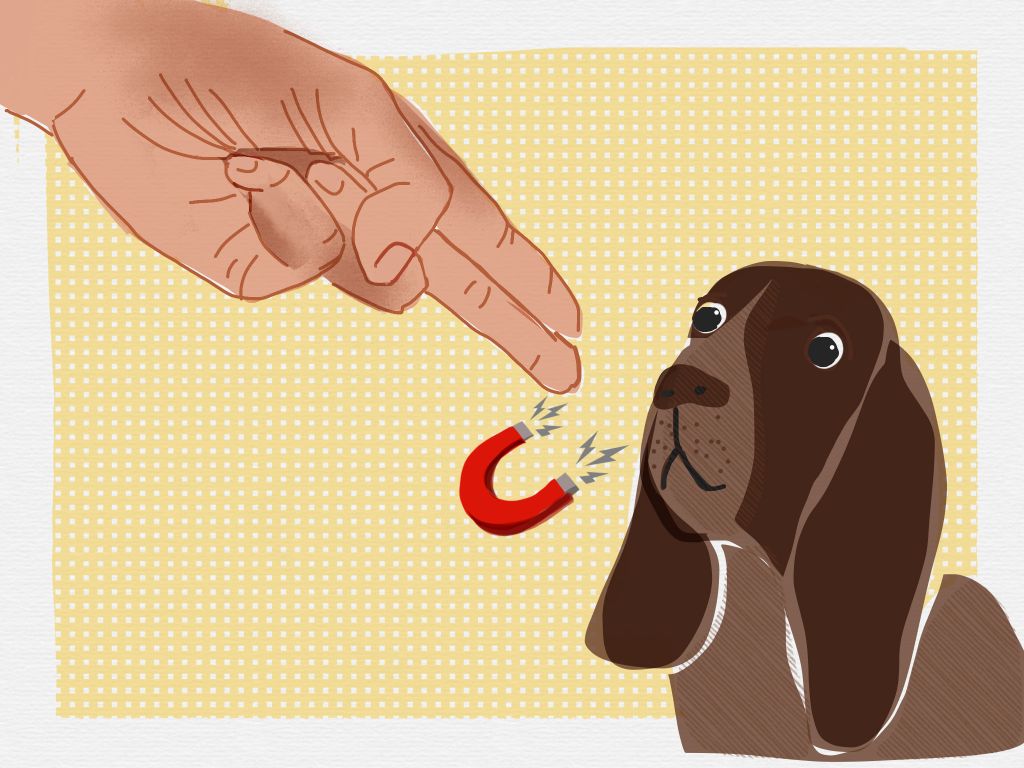
A major benefit of target training is that it can be used alongside other training methods and cues. For example, you can use a verbal cue like “sit” while also presenting the target stick. The dog learns to associate the verbal command with the target visual. This allows the target to be faded gradually so the dog responds to the verbal cue alone. Target training is compatible with reward-based techniques like clicker training and lure training.
According to Purina, target training is an excellent foundation for teaching commands and tasks. The targeting behavior can then be shaped into more complex skills over time. It provides a clear way to direct the dog towards exhibiting desired behaviors.
Selecting Targets
When selecting a target for training, there are several key factors to consider:
Size – The target should be large enough for the dog to easily see and touch with its nose or paw, but not too large as to be cumbersome. Often a target is about the size of a human fist.
Shape – Many common target shapes are circles, squares, or triangles. Simple, distinct shapes are easiest for a dog to recognize. Avoid ambiguous shapes.
Texture – The texture should provide some grip and friction so the dog’s nose or paw does not slide off it easily. Felt, fleece, and rubber materials often work well.
Mobility – Fixed targets that stay in place are good for initial training. Portable targets allow you to move the target and generalize the touching behavior to new locations.
Distinctiveness – The target should look unique and standalone from the surrounding environment so the dog associates touching it with earning a reward. Bright colors and patterns help.
Consider the individual dog’s size, abilities, and needs when selecting a target. The goal is to choose something the dog can successfully touch and focus on. This sets up both the dog and trainer for a positive, rewarding training experience (AKC).
Introducing the Target
A key part of target training is pairing the target with rewards to build value and get the dog interested in interacting with it. Start by showing your dog the target and allowing them to sniff and investigate it. Whenever your dog shows interest in the target, mark the behavior (say “yes!”) and give a treat. Repeat this pairing several times so your dog starts to associate the target with getting rewards.
Once your dog reliably goes to the target, start placing the treat directly on the target. This teaches your dog that the rewards come from the target itself. Continue rewarding every time your dog touches its nose to the target. As your dog understands that touching the target results in a reward, begin intermittent reinforcement by only rewarding some target touches instead of every one. This will build the behavior faster. Fade the lure as your dog becomes more comfortable targeting on cue. The key is gradually building value in the target object through consistent reward pairing.
Be patient during this process – some dogs will catch on right away, while others may need more repetition. Keep training sessions short and fun. Once your dog eagerly runs up and touches the target object, you’ll be ready to shape more complex behaviors using it as a lure and prompt.
Training Behaviors
Target training is often used to shape new behaviors in dogs. Shaping involves rewarding successive approximations towards a desired end behavior. For example, to teach a dog to spin in a circle, you would start by clicking and rewarding any slight head turn towards their side, then only reward turns that go further around, building up to a full spin over many repetitions. Target training assists shaping by giving the dog a clear focal point to interact with.
Lures can also be used to prompt the initial behavior and guide the dog towards the target. For example, holding a treat by the target and moving it in a circle will lure the dog to follow it around and touch the target, resulting in a spin. However, the lure should be faded quickly to avoid creating a dependence on it. The target itself becomes the cue for the behavior. According to Targeting vs. Luring, targeting creates clearer communication and is often more effective for training spins, circles, and other sequenced behaviors.
With either shaping or luring, clicker trainers reinforce every time the dog correctly touches the target. This captures the desired target touch behavior. The dog quickly learns to repeat actions that produce the click/reward. Target training provides a clear focus for the dog to earn those reinforcements. With patience and practice, complex chains of behaviors can be built using targeting as a foundation.
Chaining Behaviors
Chaining refers to stringing together a sequence of behaviors one after another. This allows dogs to learn complex actions or routines by breaking them down into smaller, manageable steps. There are two main methods for teaching chains – forward chaining and backward chaining.
In forward chaining, the behaviors are taught in the sequence in which they will be finally performed. The dog is rewarded at the completion of each successful step in the sequence. For example, teaching a dog to fetch a ball may involve rewarding for eye contact, going to the ball, picking the ball up, and bringing the ball back. Each new step is added to the sequence and the dog is rewarded at the end for completing the full sequence so far. According to the AKC Canine Health Foundation, forward chaining can be especially useful for teaching obedience behaviors in a sequence (AKCCHF).
Backward chaining involves teaching the steps in reverse order. The dog is first rewarded for the final behavior in the sequence, then the next-to-last, and so on backward through the chain. According to Karen Pryor, this method can be particularly helpful for dogs who become frustrated trying to figure out multi-step behaviors. The immediate reward helps keep them motivated. Backward chaining has been effectively used for teaching service dogs and competition dogs complex routines (Pryor).
Whether using forward or backward chaining, it is important to initially reinforce every step. Once the dog reliably performs the full sequence, rewards can be given intermittently. Being able to chain behaviors gives dogs the skills for performing extended routines and complex tasks.
Fading and Generalizing
Once your dog has mastered targeting the object every time, the next step is to start fading the target prompt. Fading involves gradually reducing the intensity of the target over multiple training sessions (Dogsthat.com/podcast/173/). This teaches the dog to offer the behavior without needing the target.
Start by holding the target slightly further away from the dog’s nose on the cue. Slowly increase the distance over several sessions until you can fully remove your hand and the dog still touches the target. Eventually, fade the target so the dog offers the behavior on just the verbal cue (Whole-dog-journal.com).
As you fade the target, also work on generalizing the behavior to real-life situations. Practice targeting in different locations and with different target objects. Reward generously when the dog successfully transfers the skill. The key is to go slow with lots of repetition before expecting the dog to perform without the target present.
Fading the target prompt is crucial for teaching the dog to respond reliably to just the verbal cue. Mastering the behavior in training prepares the dog to generalize it to the real world. With patience over multiple sessions, dogs learn to perform behaviors on cue without target prompts.
Troubleshooting
Like any training method, you may encounter some issues when first starting target training. Here are some of the most common problems and potential solutions:
Dog is frightened of target
Some dogs may be scared of certain targets, especially at first introduction. Start by placing the target on the floor and rewarding the dog for simply looking at it. Gradually move the target closer as the dog becomes more comfortable. Use high-value rewards to build positive associations.
Dog won’t touch target
If your dog is hesitant to touch its nose to the target, try smearing a dab of peanut butter or cream cheese on the target to encourage contact. Shape the behavior in small steps, rewarding for moving towards the target, then sniffing it, before requiring full contact.
Dog loses interest
Vary the rewards used, incorporate play and praise, and keep training sessions short to maintain engagement. Also ensure you are not advancing too quickly or asking for repetitions beyond the dog’s capabilities.
For more troubleshooting tips, see this article.
Conclusion
In summary, target training provides a great way to shape animal behavior through positive reinforcement. Some key benefits and uses of target training include:
- Teaching new behaviors and commands
- Building focus and engagement
- Strengthening the human-animal bond
- Providing mental stimulation
- Aiding with physical exercise and mobility
- Shaping complex chains of behaviors
- Fading food lures and prompts
- Generalizing behaviors to new contexts
With patience and consistency using clicker training, target sticks, platforms, and other targets, we can reinforce desired actions in animals. Target training sets up both human and animal for success through clear criteria and incremental steps. Overall, it is a versatile and effective approach for positive training.

